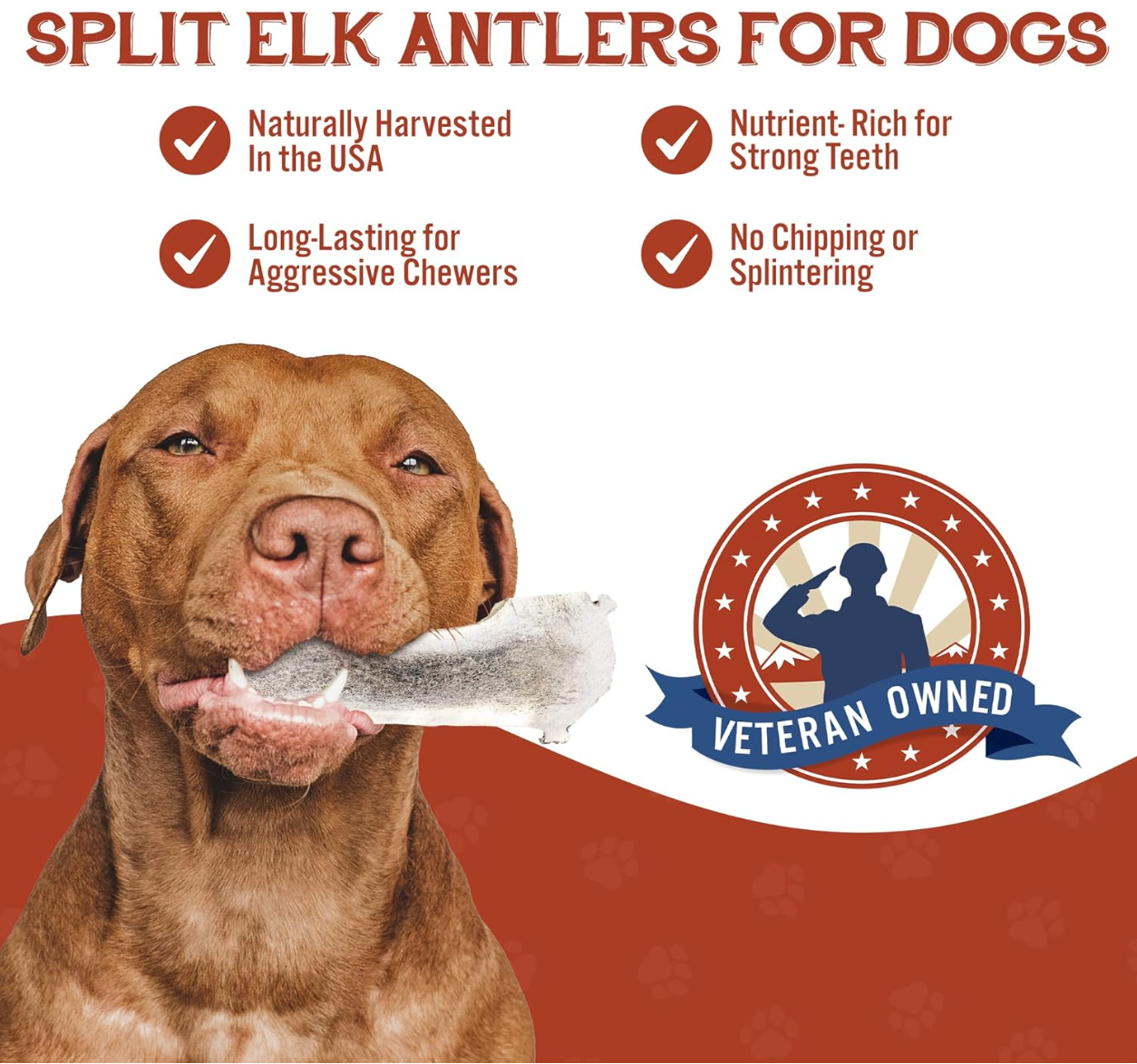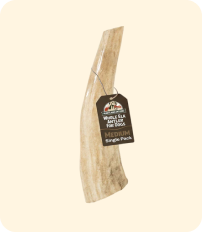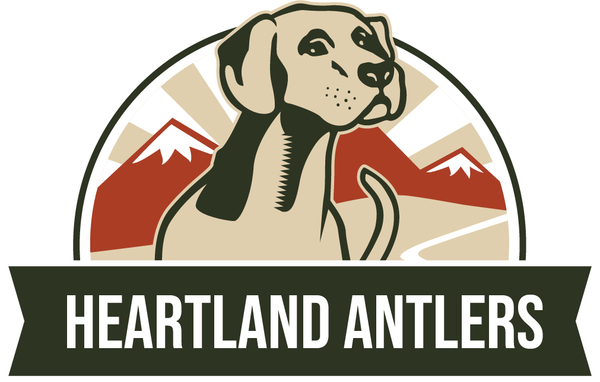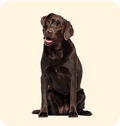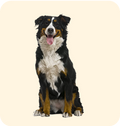Introduction: The Chew Toy Dilemma
Dogs love to chew. It's an instinct that helps keep their teeth clean and their minds occupied. Two popular chew toy choices are antler chews and rawhide. Let's compare them to help you choose the best option for your dog.
Key Takeaways
- Antler chews are natural, sustainable, and packed with minerals
- Rawhide chews are processed and may contain chemicals
- Antlers are more durable and longer-lasting than rawhide
- Antler chews provide better dental health benefits
- Antlers are safer and more digestible than rawhide
Chew toys are important for your dog's dental health and mental stimulation. Rawhide has been popular for years, but antler chews are gaining popularity. We'll explore why antlers might be better for your dog.
Every dog is different. What works for one might not work for another. Always watch your dog with any new chew and check with your vet if you're unsure.
What Are Antler Chews?
Antler chews are made from real deer or elk antlers that are naturally shed each year. This makes them sustainable and eco-friendly. They're tough, long-lasting, and packed with minerals like calcium and phosphorus, which are good for your dog's bones and teeth. Antlers come in different sizes to suit all breeds.
Antler chews are all-natural with no processing or chemicals involved. This makes them safe and healthy for dogs of all ages and sizes. Antler chews for puppies are especially good as they provide a safe teething option.
The Composition of Rawhide Chews
Rawhide chews are made from the inner layer of cow or horse hides. The process involves many steps and often includes chemicals to clean and preserve the material. This is very different from the natural process of collecting shed antlers.
Rawhide chews don't offer the same nutritional benefits as antlers. They're mostly just for chewing, without the added minerals that antlers provide. The chemicals used in processing rawhide can sometimes upset a dog's stomach.
Rawhide can be a choking hazard. Pieces can break off and potentially cause blockages if swallowed. This is less of a concern with hard antler chews. The safety of antler chews compared to other options like bully sticks is another reason many pet owners prefer them.
Nutritional Benefits: Antlers vs. Rawhide
Antler chews are packed with minerals good for your dog's health. Calcium keeps bones strong, phosphorus is important for energy and cell repair, and zinc is great for your dog's coat and immune system.
Rawhide doesn't offer much nutrition. It's mostly just processed animal skin. While chewing on rawhide can help clean teeth, it doesn't provide the same mineral boost that antlers do.
Think of antlers as a healthy snack for your dog, while rawhide is more like empty calories. The benefits of antler chews extend beyond just dental health, contributing to overall well-being.
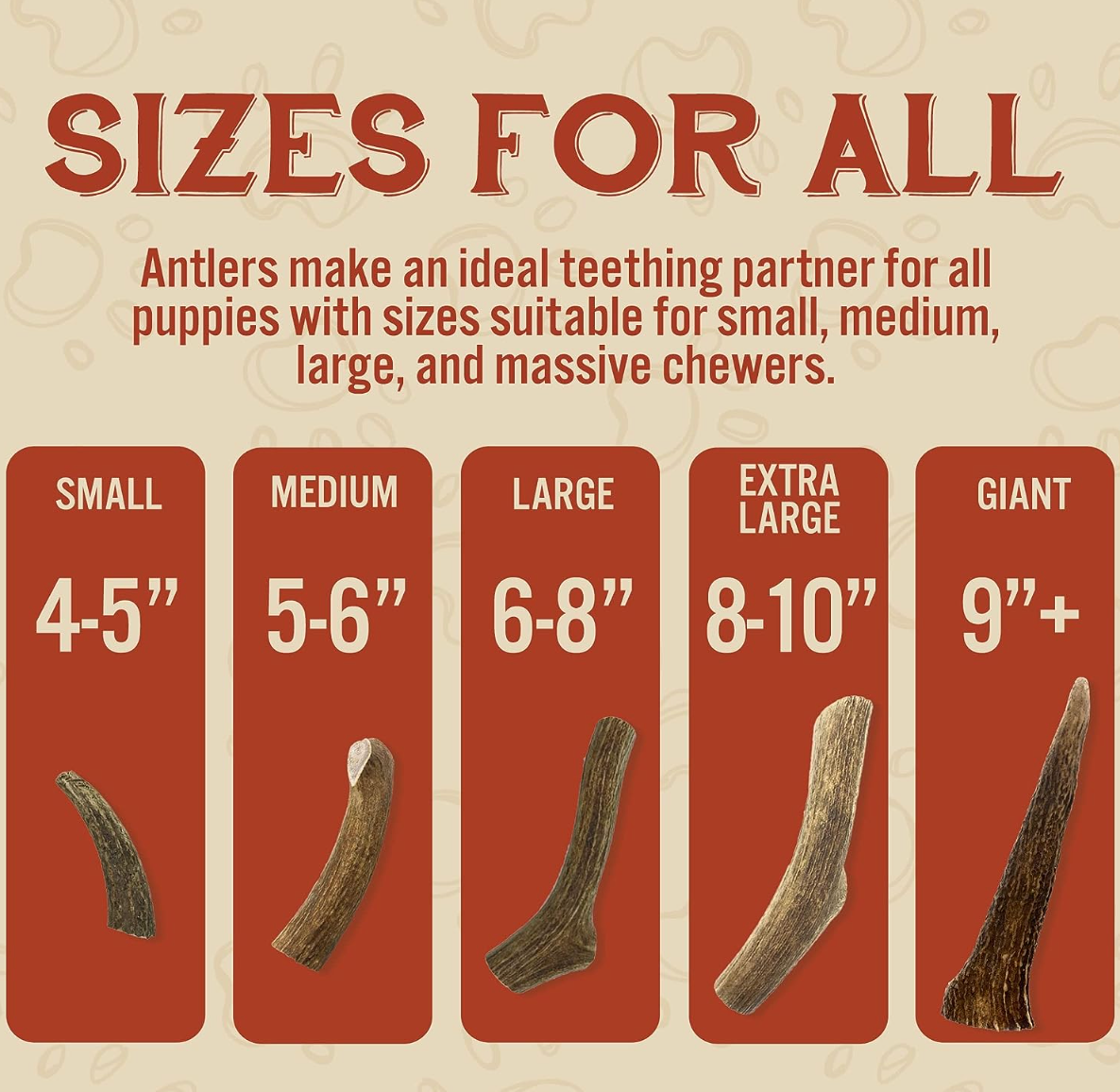
Durability and Longevity
Antlers are incredibly tough and can last for weeks or even months, depending on how aggressive your dog chews. This makes them great value for money.
Rawhide chews generally don't last as long as antlers. They soften and break apart as your dog chews, which means you'll need to replace them more often and there's a risk of your dog swallowing large pieces.
Antlers wear down slowly over time, providing a safe and long-lasting chewing experience. For aggressive chewers, split elk antler chews can be an excellent option, offering a balance of durability and accessibility.
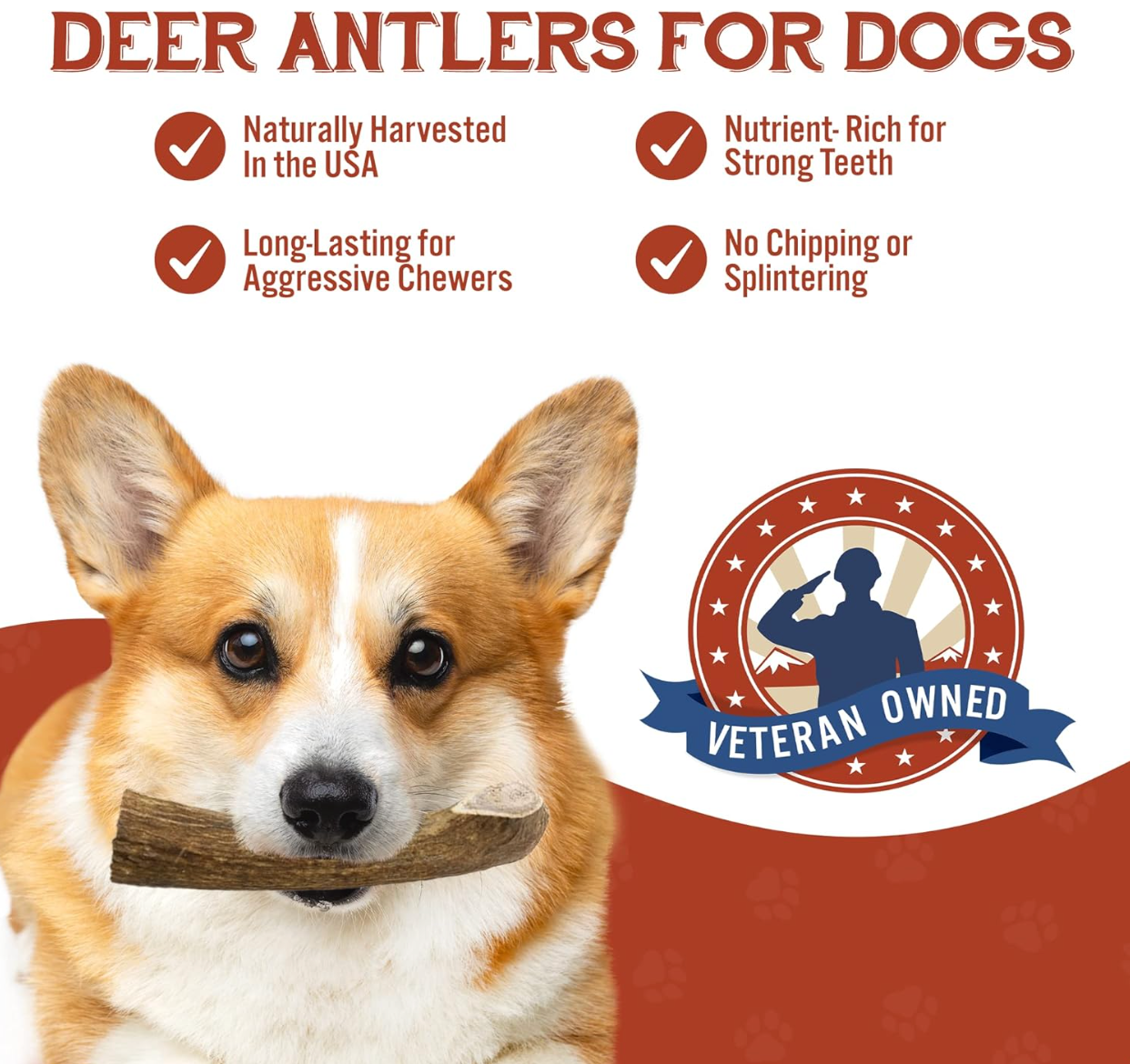
Dental Health Benefits
The hard surface of an antler acts like a natural toothbrush, scraping away plaque and tartar as your dog chews. This can help prevent gum disease and keep your dog's breath fresher.
Rawhide can help clean teeth, but because it softens as it's chewed, it's not as effective at scraping away buildup. Some dogs might swallow rawhide pieces before they've had a chance to do much cleaning.
Antlers also massage your dog's gums as they chew, helping keep gums healthy and strong. The dental health benefits of antler chews are why many vets recommend them.
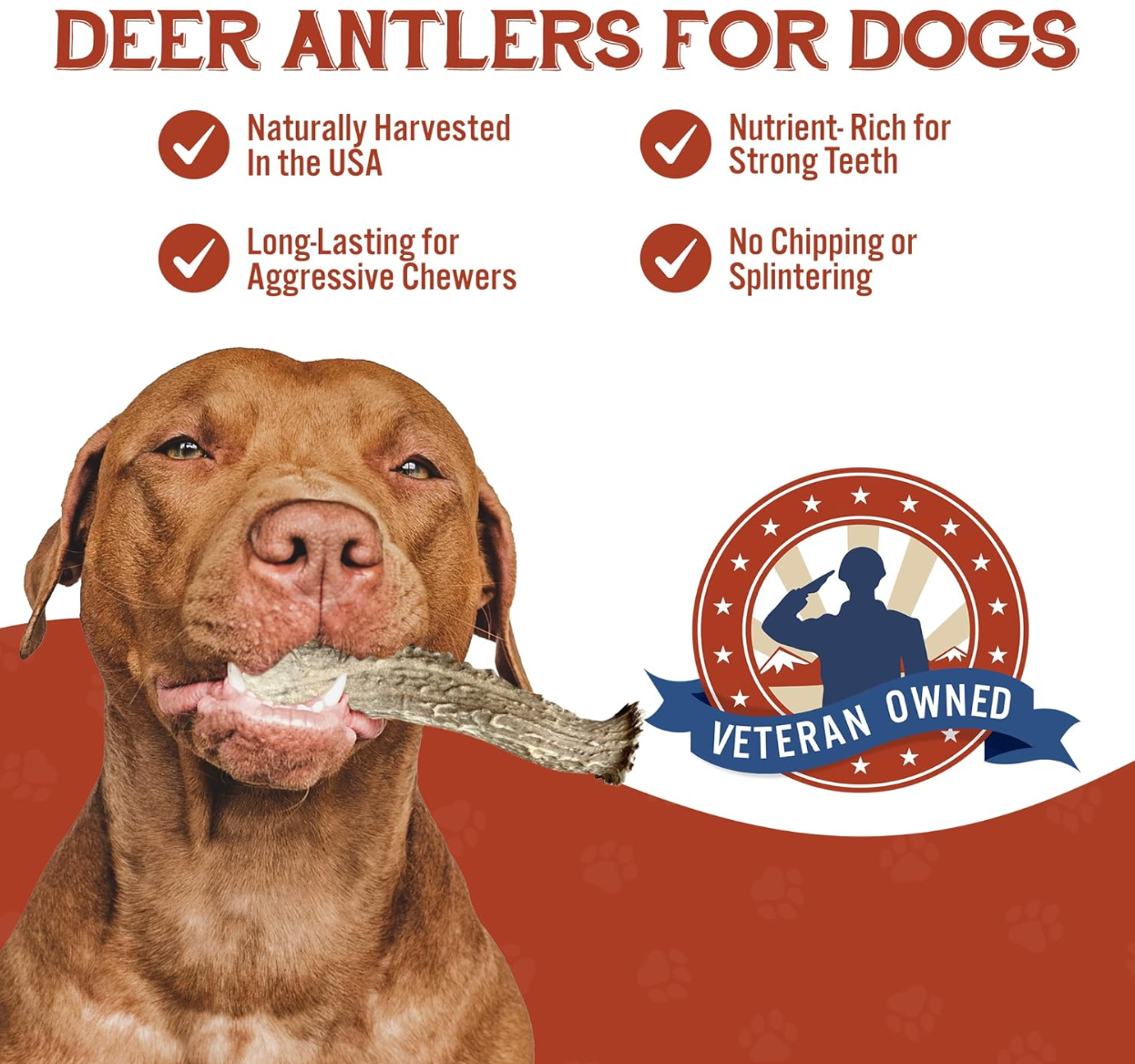
Safety Considerations
Antlers are less likely to splinter or break into large pieces that could be swallowed. This reduces the risk of choking or intestinal blockages, which can be serious problems with rawhide chews.
Rawhide can be dangerous if your dog swallows large pieces. These pieces can swell up in the stomach or intestines, potentially causing blockages that might require surgery. This risk is much lower with antlers.
It's important to choose the right size antler for your dog. A chew that's too small could be a choking hazard, while one that's too large might be frustrating for your dog to chew on. For larger breeds, XL and jumbo antler chews are available to ensure safe and satisfying chewing experiences.
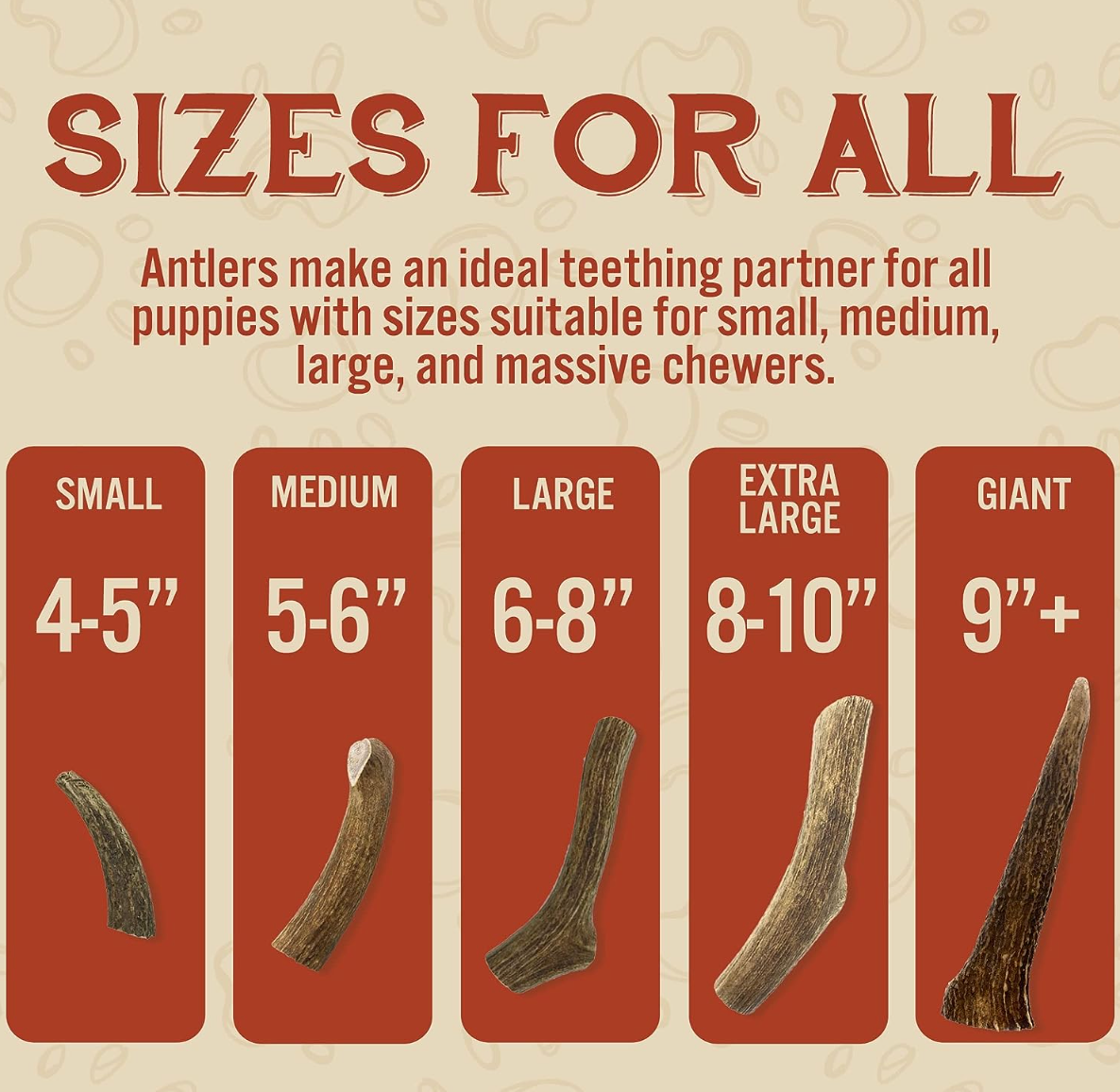
Digestibility Comparison
If your dog ingests small pieces of antler, they're generally safe and will pass through their system without issue. Antlers are made of the same stuff as your dog's own bones, so their body knows how to handle it.
Rawhide can be tough for dogs to digest. Large pieces can sit in the stomach for a long time, potentially causing discomfort or blockages. Some dogs might also have allergic reactions to the chemicals used in processing rawhide.
It's best to supervise your dog with any chew toy, but with antlers, you can have more peace of mind about what your dog is ingesting. For dogs with sensitive stomachs, antler chews can be a gentle alternative to other types of chews.
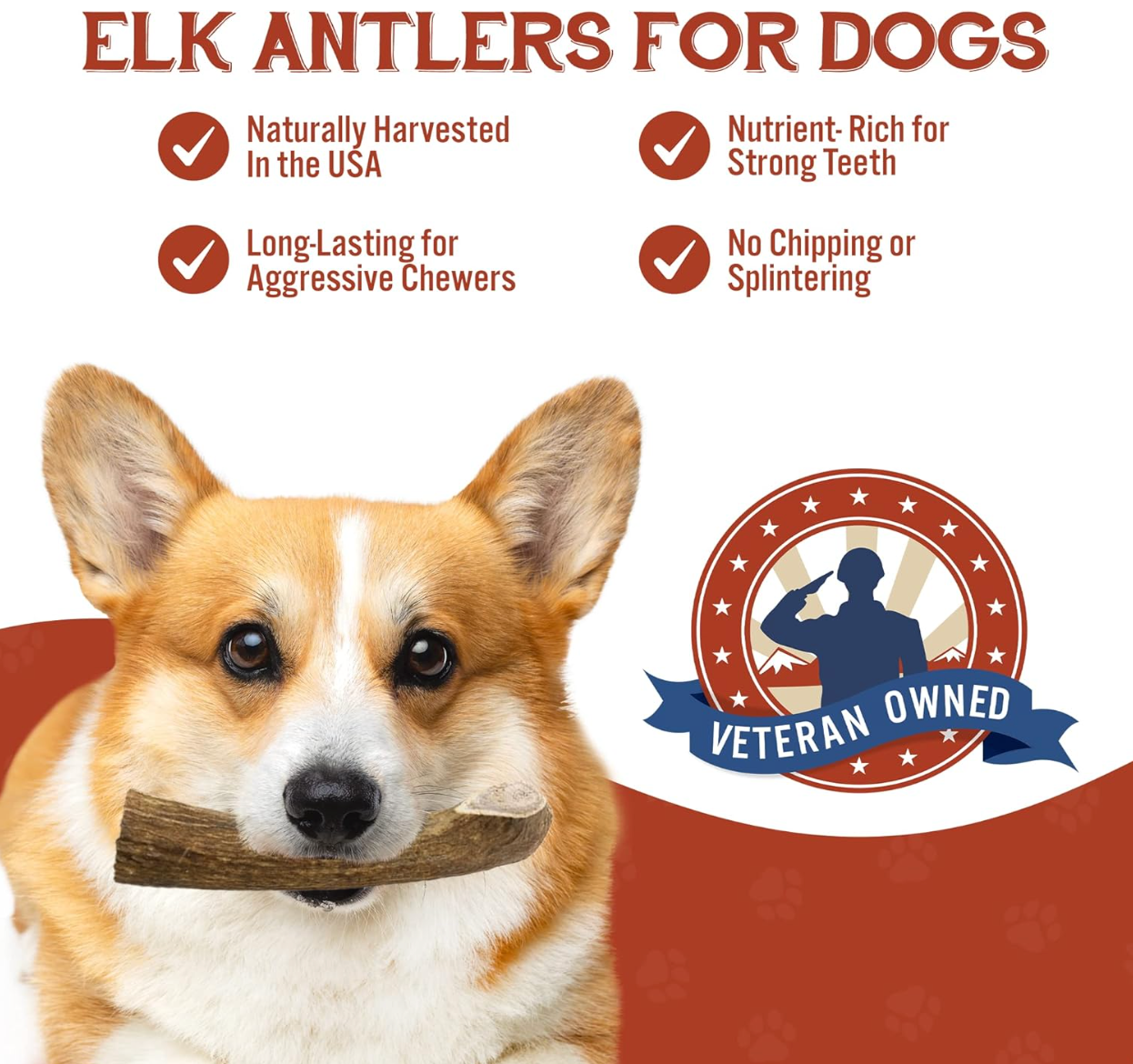
Choosing the Right Antler Chew
Picking the right antler chew for your dog is important. You want one that's big enough to prevent choking but not so big that your dog can't comfortably chew it. Here's a quick guide:
Antler Size Guide for Dogs
- Small (4 inches): Suitable for dogs 5-25 lbs
- Medium (5 inches): Ideal for dogs 20-45 lbs
- Large (7 inches): Best for dogs 45-65 lbs
- XL (8 inches): Appropriate for dogs 65-85+ lbs
These are just guidelines. Some dogs are more aggressive chewers than others, so you might need to adjust based on your dog's chewing habits. It's better to go a size up if you're unsure.
Consider whether your dog might prefer whole antlers or split antlers. Split antlers expose the softer inner core, which some dogs find more appealing. For a variety of options, check out our collection of all antler chews to find the perfect match for your dog.

Conclusion: Making the Switch from Rawhide to Antlers
Antler chews come out on top in almost every category. They're safer, more nutritious, longer-lasting, and better for dental health. They're also a natural and sustainable option that's good for your dog and the environment.
If you've been using rawhide chews, consider switching to antlers. Your dog will get all the chewing satisfaction they crave, along with some extra health benefits. Remember to choose the right size for your dog and always supervise chewing time.
Every dog is different, so it might take time for your dog to get used to their new antler chew. With patience, you'll likely find that antlers become your dog's new favorite treat. For more information on how to introduce antler chews to your dog, check out our guide on introducing antler chews to your pet. Happy chewing!
